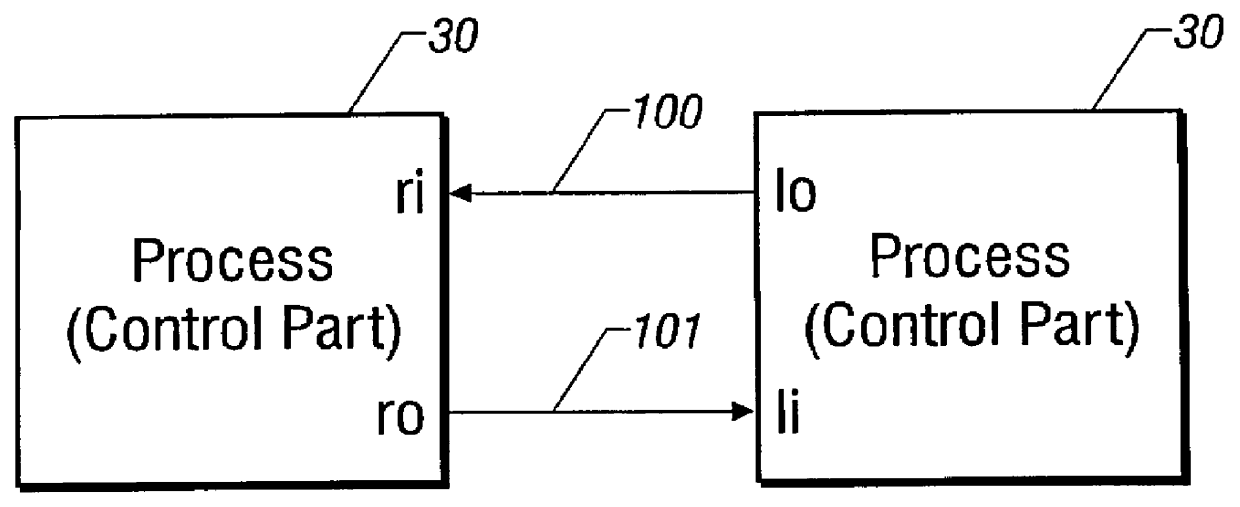Circuit implementations for asynchronous processors
a technology of asynchronous processors and implementations, which is applied in the field of circuit implementations of asynchronous processors, can solve the problems of incomplete trees introducing extra delays in the operation of the processor, and it is difficult to achieve in vlsi, and the technique has failed to gain ground in the semiconductor and computer industry
- Summary
- Abstract
- Description
- Claims
- Application Information
AI Technical Summary
Problems solved by technology
Method used
Image
Examples
working example
Updating the PC
Referring now to FIG. 2a, the variable pc is updated by process PCADD, and is used by IMEM as the index of the array imem during the ID communication--the instruction fetch.
The assignment pc:=pc+1 is decomposed into y:=pc+1;pc:=y, where y is a local variable of PCADD. The overlap of the instruction fetch, ID? (either ID?i or ID?offset), and the pc increment, y:=pc+1, can now occur while pc is constant. Action ID? is enclosed between the two communication actions PCI1 and PCI2, as follows:
PCI1;ID?i;PCI2.
In PCADD, y:=pc+1 is enclosed between the same two communication actions while the updating of pc follows PCI2:
PCI1.fwdarw.PCI1;y:=pc+1;PCI2;pc:=y.
Since the completions of PCI1 and PCI2 in FETCH coincide with the completion of PCI1 and PCI2 in PCADD, respectively, the execution of ID?i in FETCH overlaps the execution of y:=pc+1 in PCADD. PCI1 and PCI2 are implemented as the two halves of the same communication handshaking to minimize the overhead.
In order to concentrate...
PUM
 Login to View More
Login to View More Abstract
Description
Claims
Application Information
 Login to View More
Login to View More - R&D
- Intellectual Property
- Life Sciences
- Materials
- Tech Scout
- Unparalleled Data Quality
- Higher Quality Content
- 60% Fewer Hallucinations
Browse by: Latest US Patents, China's latest patents, Technical Efficacy Thesaurus, Application Domain, Technology Topic, Popular Technical Reports.
© 2025 PatSnap. All rights reserved.Legal|Privacy policy|Modern Slavery Act Transparency Statement|Sitemap|About US| Contact US: help@patsnap.com



